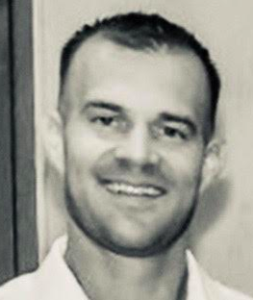Kimo Field has one piece of advice for snorkelers in Hilo Bay: Go past the breakwater.
Just outside the 2-mile stretch of rock barrier in Hilo Bay, that鈥檚 where aquatic life bustles, offering tourists ample opportunity to swim with schools of fish every bit worthy of a Hawaiian vacation.
But as far as what鈥檚 inside the wall itself?
Marine life is sparse, says Field, captain and managing director of operations for Hilo Ocean Adventures.
鈥淚f people want to snorkel, they have to go outside the wall,鈥� he said. 鈥淭hey have to swim all the way to the end and all the way to the back.鈥�
That鈥檚 because the bay鈥檚 century-old breakwater, while protecting the harbor, has been inhibiting the water鈥檚 beneficial circulation, leaving the downtown pool in East Hawaii stagnant and full of silt.

Though hammerhead sharks hunker down in the bay during spawning season, and rays and some brackish fish swim there as well, the reef beneath the surface has long been dead and ocean life is far from abundant.
Recreationally, Hilo Bay is under-utilized, Field said, and aesthetically, it looks unhealthy at times.
鈥淭hat鈥檚 going to have to be a top priority,鈥� Field said of fixing the problem.
For Field, whose business is steps away from the bay鈥檚 shore, healthier water would mean more habitat for fish as well as more options for recreationists. The bay will be put to better use.
鈥淚t鈥檒l be beneficial to just about everything,鈥� he said.
Hawaii County agrees. It鈥檚 identified improving water quality in the bay as a high priority.
While improvements have been on the radar for more than a decade, the county Planning Department recently wrote a letter of support to the Army Corps of Engineers for a new study that could pave the way for improved water quality and circulation in Hilo Bay.
The study — which would be led by the Corps and is a follow-up to one the department conducted in 2009 — will analyze the benefits of breaching portions of the breakwater and other measures to improve water circulation, a press release issued by the county stated.
It will also identify sources of runoff into the bay, and provide plans, recommendations and measures to improve its water quality and circulation.
While the state Department of Health Clean Water Branch said bacteria levels in the bay haven鈥檛 raised concerns about contaminated water in some time, the county Department of Environmental Management office said it鈥檚 not uncommon for bacteria levels to increase after rainy days.
Hawaii County Planning Director Michael Yee agreed with that assessment.
鈥淥ver the past years, water quality has continued to be degraded by both upland water runoff and water circulation issues, which we believe are caused by the breakwater inhibiting the circulation within the Bay,鈥� Yee wrote Aug. 12 in the letter of support to the Army Corps of Engineers.
Construction of the breakwater began between 1908 and 1930 in order to shield ships in the bay from rough swells, but the structure has also captured sediment flowing out of the Wailuku and Wailoa rivers, leading to poor water quality there.
Hawaii County Mayor Harry Kim said he has wanted for years to modify the breakwater to allow water to flow through portions of the wall, which would foster the return of marine life to Hilo Bay.
鈥淚magine how great it would be to be able to swim, paddle and fish with no fear of contamination,鈥� Kim said in the press release. 鈥淏y modifying the breakwater to clean up the water, you鈥檒l see all kinds of fish and shellfish come back. This will transform Bayfront.鈥�
Bayfront Highway is the main street that hugs the bay in downtown Hilo that passes by hotels, restaurants and the town鈥檚 famous farmers market.
The mayor, who lost his bid for reelection earlier this month and leaves office Dec. 7, raised the idea for further study last year with the state Department of Transportation鈥檚 Harbors Division, which agreed to a technical study to develop the scope of the project.
The budget for the new study is estimated at $100,000, with the state and county paying $25,000 each, and the federal government providing $50,000. The Hawaii County Council approved its share of the funds in January.
Once the federal money has been secured, the study can start, the press release stated. The first two phases of the three-phase study are slated to be conducted from October through April, with the third phase based on the outcome.
Field said he took the Army Corps of Engineers team out to the breakwater for four days to study it back in September 2018. He said a possible remedy discussed at the time was staggering openings in the wall.
What the study recommends is yet to be determined, as is the size and cost of any potential project or whether any recommended solutions are even worth doing, said Derek Chow, deputy director for the state Harbors Division.
But if the remedy involves breaking out portions of the wall, that鈥檚 a major undertaking regardless of how few pieces need removing or adjusting.
鈥淎ny work in the water is a major endeavor,鈥� he said.
 Sign up for our FREE morning newsletter and face each day more informed.
Sign up for our FREE morning newsletter and face each day more informed.
We need your help.
Unfortunately, being named a聽finalist for a聽Pulitzer prize聽doesn’t make us immune to financial pressures. The fact is,聽our revenue hasn鈥檛 kept pace with our need to grow,听.
Civil Beat is a nonprofit, reader-supported newsroom based in 贬补飞补颈驶颈. We鈥檙e looking to build a more resilient, diverse and deeply impactful media landscape, and聽we hope you鈥檒l help by .


